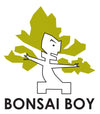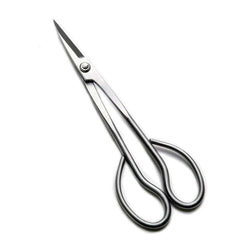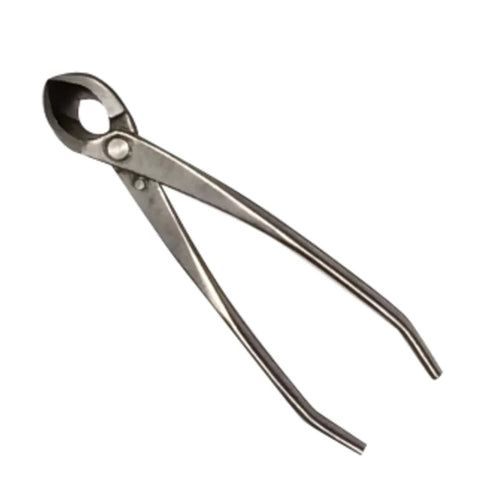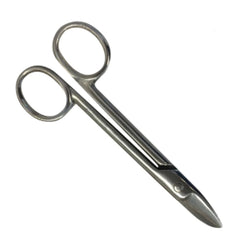Introduction
Bonsai cultivation is a delicate art that requires patience, skill, and the right tools. These tools are instrumental in using bonsai as a method of artistic expression: they allow you to change the shape of the bonsai into many potential styles -- from the traditional to the modern, the formal to the informal, the naturalistic to the symmetrical. As a beginner, it can be overwhelming to know which tools are essential and how to use them effectively. In this bonsai tool guide, we will guide you through the basic and advanced tools, their uses, and tips on how to use them effectively.
What are you trying to achieve?
Bonsai cultivation can be a passing hobby, or it can be a grand journey towards becoming an artisan. As a casual bonsai enthusiast, you can start with basic bonsai tools (and gradually invest in advanced tools as you grow your skills), or you can go full-bore and get the best tools for the job right away, though this is not recommended for those without large sums of expendable income. When it comes to the material of the tools, stainless steel is a good option for beginners as it does not rust and therefore requires less care & maintenance. However, Japanese carbon steel tools are of superior quality and are a potential investment for the future -- artisan bonsai cultivists exclusively use japanese carbon steel.
Your Tools Need Care Too, Not Just Your Bonsai
No matter what type of steel your tools are, going through the proper maintenance protocol is critical. Firstly, make sure to thoroughly clean any tools you have used to shape your bonsai when you are done -- in the case of Japanese carbon steel tools, this is even more essential as any moisture on the tools whatsoever will cause them to rust. Just as (if not more) important is to store your tools in a dry place, such as a specific toolbox just for your bonsai tools. Again, this will prevent the rusting of carbon steel tools, though it is very much advised to do the same for stainless steel tools. Bonsai boy recommends also using tool oil on carbon steel tools after cleaning them, as an added layer of protection against rust.
To ensure the longevity and practical value of your tools, they must be regularly sharpened with natural wet stone. Never sharpen these tools with diamond sharpeners, as diamond sharpening tools are designed to remove far too much steel for our tiny bonsai tools to handle. If you are using carbon steel tools, you won't have to sharpen these as often as you would need to sharpen stainless steel. Lastly, if you are using advanced tools with moving parts, make sure to oil those parts of the tools to ensure that they continue working correctly.
This is Just an Overview!
There are many more tools (that you may find necessary in your individual bonsai journey) than what is covered in this article. This is simply a quick overview of some of the most common and repeatedly-used basic and advanced tools on the market. If you are unclear about any of the information presented in this post, consider purchasing 101 essential bonsai tips from our website.
Basic Bonsai Tools
Pruning Shears
Pruning shears are essential for trimming and shaping the bonsai tree. They are designed to make precise cuts, and their sharp blades ensure that the tree is not damaged. When using pruning shears, it is important to make clean cuts at a 45-degree angle to promote healing of the tree. Remember that it is also important to clean the blades after each use to prevent the spread of disease.
Concave Cutters
Concave cutters are used to remove branches without leaving a stub. They are designed to make a concave cut -- defined by the unique shape of the tool -- that promotes healing and prevents disease, mimicking a natural shedding of un-needed growths by the tree. When using concave cutters, it is important to make the cut as close to the trunk as possible without damaging the bark.
Bonsai Wire
Bonsai wire is used to shape the bonsai tree by bending the branches and trunk. It is important to choose the right gauge of wire for the size of the branch or trunk. just as important is wrapping the wire tightly around the branch or trunk without damaging the bark, though you should absolutely remember to remove the wire before it cuts into the bark.
Wire Cutters
With a good set of wire cutters, you can easily and safely remove the wire from the tree without damaging it. The wire cutters should be designed to have a sharp blade that can easily cut through the wire without having to apply too much force. Additionally, the handle should be comfortable to hold and provide a good grip, so that you can work with precision and accuracy. The right set of wire cutters can make the job of removing wire from trees much easier and safer. Do not try and substitute a good pair of wire cutters with another form of cutter -- this is an easy way to damage your tree.
Bonsai Rakes
Bonsai rakes are used to remove compacted soil when repotting the bonsai tree. They are also used to free up compacted soil during growth. If you do not have a bonsai rake, you can use chopsticks to loosen the soil. It is important to be gentle when using a rake or chopsticks to avoid damaging the roots. Fun fact, you can also use chopsticks to test the moisture levels of the soil!
Bonsai Tweezers
Bonsai tweezers are used to remove small buds, leaves, and insects from the bonsai tree. More importantly, they can be used to remove weeds from the pot, roots and all. They are also used to prune the smallest of branches. When using bonsai tweezers, it is important to be gentle, with a steady hand, to avoid damaging the tree.
Advanced Bonsai Tools
Root Hook
A root hook is used to remove soil and untangle the roots when repotting the bonsai tree. It is important to be gentle when using a root hook to avoid damaging the roots. It is also important to clean the hook after each use to prevent the spread of disease.
Jin Pliers
Jin pliers are used to create jin, which are deadwood branches that add character to the bonsai tree. They are also used to remove bark from the trunk to create shari, which is deadwood on the trunk. When using jin pliers, it is important to be gentle to avoid damaging the bark.
Rotary Tools
You can use rotary carving tools (either by hand or with a power tool attached to a carving bit) for a variety of uses -- but they are primarily for removing deadwood on your tree, which is where having electric rotary tools comes in especially handy. These electric tools are dangerous, though, so be sure to use lots of protective equipment when using them.
Grafting Knife
A grafting knife -- also known as a "thumb knife" -- is for the process of grafting your tree, which can include implanting, fusing and/or threading branches (or even trunks) from a donor plant to a recipient plant. It is also important to note that the blade is very thin, so it is important to use a light touch when making cuts -- the blade is sharpened to a very fine edge, which is ideal for making clean, precise cuts, but can also make it easy to slice into your own skin. All of these features make this knife an ideal choice for grafting, as it is essential to have a sharp, precise, and comfortable knife in order to achieve the best results.
Conclusion
In conclusion, it is important to invest in quality bonsai tools for better results. Having the right tools is essential for bonsai cultivation, and it can make the difference between a healthy and beautiful bonsai tree and a damaged and diseased one. Even more important is knowing what you are doing with the tools, and if you find yourself lost at any point, consider buying the book 101 essential bonsai tips -- or even a Bonsai Starter Kit from our website, which nabs you a growing bonsai tree ready to be crafted to your liking, and includes the book.




